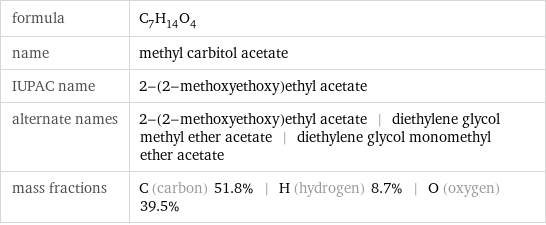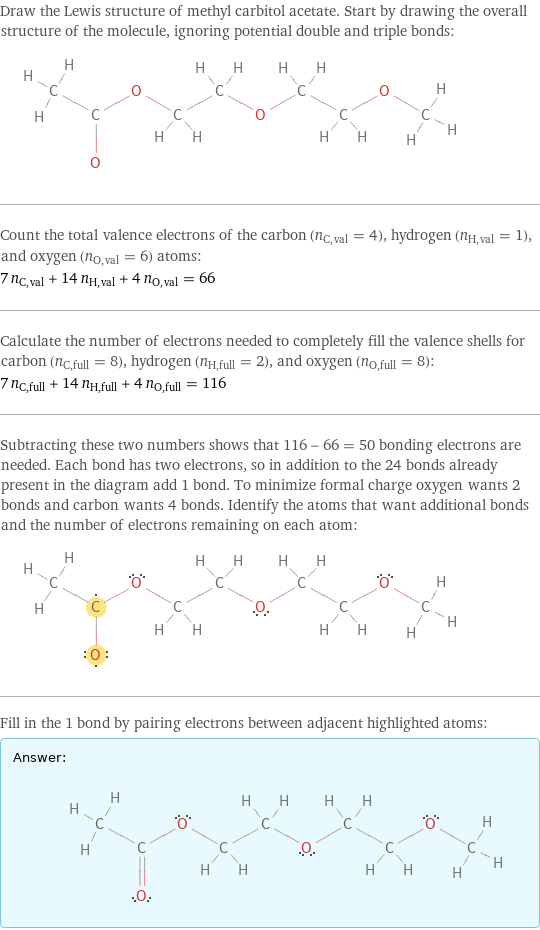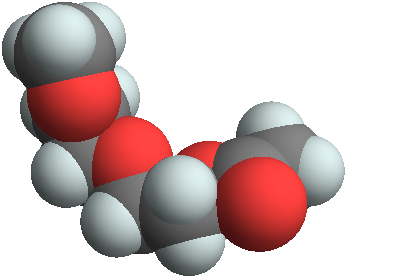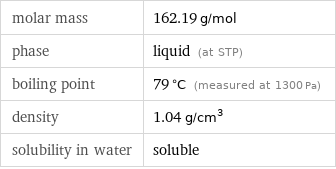Input interpretation

methyl carbitol acetate
Chemical names and formulas

formula | C_7H_14O_4 name | methyl carbitol acetate IUPAC name | 2-(2-methoxyethoxy)ethyl acetate alternate names | 2-(2-methoxyethoxy)ethyl acetate | diethylene glycol methyl ether acetate | diethylene glycol monomethyl ether acetate mass fractions | C (carbon) 51.8% | H (hydrogen) 8.7% | O (oxygen) 39.5%
Lewis structure

Draw the Lewis structure of methyl carbitol acetate. Start by drawing the overall structure of the molecule, ignoring potential double and triple bonds: Count the total valence electrons of the carbon (n_C, val = 4), hydrogen (n_H, val = 1), and oxygen (n_O, val = 6) atoms: 7 n_C, val + 14 n_H, val + 4 n_O, val = 66 Calculate the number of electrons needed to completely fill the valence shells for carbon (n_C, full = 8), hydrogen (n_H, full = 2), and oxygen (n_O, full = 8): 7 n_C, full + 14 n_H, full + 4 n_O, full = 116 Subtracting these two numbers shows that 116 - 66 = 50 bonding electrons are needed. Each bond has two electrons, so in addition to the 24 bonds already present in the diagram add 1 bond. To minimize formal charge oxygen wants 2 bonds and carbon wants 4 bonds. Identify the atoms that want additional bonds and the number of electrons remaining on each atom: Fill in the 1 bond by pairing electrons between adjacent highlighted atoms: Answer: | |
3D structure

3D structure
Basic properties

molar mass | 162.19 g/mol phase | liquid (at STP) boiling point | 79 °C (measured at 1300 Pa) density | 1.04 g/cm^3 solubility in water | soluble
Units

Liquid properties (at STP)

density | 1.04 g/cm^3
Units

Chemical identifiers

CAS number | 629-38-9 Beilstein number | 1761512 PubChem CID number | 12384 SMILES identifier | CC(=O)OCCOCCOC InChI identifier | InChI=1/C7H14O4/c1-7(8)11-6-5-10-4-3-9-2/h3-6H2, 1-2H3 RTECS number | KL6300000
Toxicity properties

RTECS classes | primary irritant